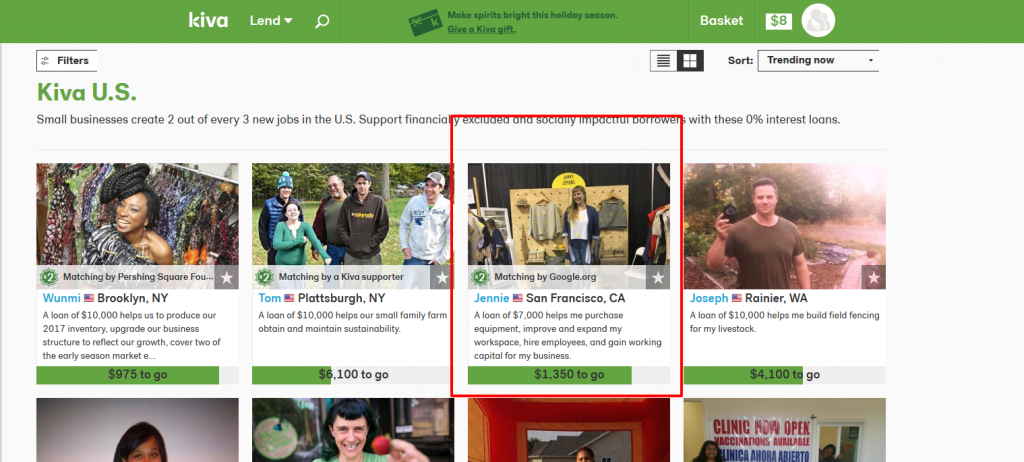Amazon’s Halo Effect
There has been a great deal of positive press regarding Amazon’s acquisition of Whole Foods Market. I think it’s time we explore the possibility that the acquisition may not be as incredible as everyone is expecting.
It seems that Amazon has experienced the halo effect with this acquisition. Wikipedia defines the Halo Effect as “the tendency for an impression created in one area to influence opinion in another area.” Since Amazon has been so incredibly successful at nearly everything they have touched, everyone is assuming Amazon will be just as successful in a retail grocery adventure. Let’s explore the other side of the possibility that this could potentially end badly for Amazon.
- Amazon has little retail experience, and retail is vastly different than warehouse operations. How will the culture of website interactions and box deliveries work in a face-to-face world? Is web merchandising the same as retail merchandising? Will Amazon’s success up-selling online work in a retail store ?
- Amazon has a demanding culture and works warehouse employees hard. Will this yield negative consequences in a retail environment where the customer interfaces with these same employees? At the warehousing level, Amazon uses employees like interchangeable pieces and relies heavily upon temporary firms to fill jobs. Will this culture work for cashiers and customer-interfacing positions?
- Amazon is used to operating on thin margins and being the lowest cost provider. This appears to be the antithesis of the Whole Foods business model. Whole Foods makes money because they sell groceries for significantly more than their competitors. What happens when Whole Foods’ profits plummet as margins are drastically trimmed to match the Amazon model? Is this part of the Amazon plan or will Whole Foods keep margins high? If so, can Amazon run two very different business models simultaneously?
There are many examples where successful companies ventured far afield and learned that success in business #1 does not always equal success in business #2. One of the more prominent examples is Donald Trump, e.g., Trump Vodka, Trump Airlines, Trump Steaks, Trump Magazine, etc. See the entire list of Trump products.
I’m not saying I think the Whole Food acquisition is a bad idea. There are many potential synergies and growth opportunities the merger provides to Amazon. I just think it’s dangerous to assume that the deal is a guaranteed winner simply because it involves Amazon.
Best of luck, Jeff.
Your Mission Matters: How Kiva Lost Its Way
The initial purpose of Kiva.org was to give people in third-world countries a leg up through micro loans. By crowdsourcing a series of $25 loans, entrepreneurs in Asia and Africa could climb out of poverty with a small loan.
Successful entrepreneurs paid back their loans and the money was relent to new entrepreneurs thereby repeating the virtuous cycle. As a big supporter of Kiva, I have created my own team and donated my money to helping raise people’s quality of life via entrepreneurs.
However, today I am disenfranchised with Kiva as they seemed to have lost their way. It seems that Kiva is intent on growing simply for growth’s sake and has lost the original mission. The last time I went to lend money, the site was inundated with people asking for loans that had nothing to do with climbing out of poverty via entrepreneurs.
Example 1: Traditional U.S. Bank Loan
Aren’t there already many mechanisms in place to get an inventory loan of $10,000? Banks, credit cards, or crowdfunding already exist.
Example 2: Student Loans
You can find many people looking for student loans both in the U.S. and abroad. This seems like a stretch, at best, from the original Kiva mission.
Example 3: Free money?
It’s hard to explain how lending money to someone for their rent isn’t anything more than someone taking advantage of an interest-free loan? That’s assuming they will pay it back at all?
My wish is for Kiva to expand its original mission of teaching people to fish instead of drifting into giving away the fish. It would be better for Kiva to partner with Heifer Foundation (provides farm animals to third-world farmers to create sustainable income) than to drift into a polluted mission.
How does this apply to your business? If you drift too far from your core mission, you too may lose your way, your customers, your employees, or your passion. For what it’s worth, I still financially support Kiva. It is a wonderful concept that deserves proper support.
Infographic: 9 Steps to an Operations Plan
7 Excuses Business Owners Don’t Have an Operations Plan
Take the course at http://bit.ly/ops-plan
Business Hacks to Make Creating an Operations Plan Simple
4 Unexpected Benefits of an Operations Plan
Interested in creating an Operations Plan the easy way?
Visit www.bit.ly/ops-plan
8 Reasons You Need an Operations Plan
Interested in creating an Operations Plan the easy way?
Visit www.bit.ly/ops-plan
How to Create an Operations Plan
When asked if an Operations Plan is a “good idea,” 99.9% of business owners nod their head yes. When asked if they have one, 90% of business owners shake their head no.
An Operations Plan seems overwhelming and simply too much work, but it’s not if you do it right. Below is a simple 9-step plan to begin work (and eventually finish) your Ops Plan.
Step 1: Give up on creating a 1000 page document
No one reads anymore, so why create your own version of War and Peace.
Step 2: Buy a video camera
Video is the simplest method to create systems and the most effective way for employees to learn.
Step 3: Wait for something to go wrong
Many businesspeople say, “I don’t know where to start the systemization.” Don’t worry; simply start fixing problems as they arise.
Step 4: When mistakes happen, ask “Is there ANYTHING the company could have done to make the mistake less likely to happen?” Don’t just assume mistakes are caused by “stupid employees.”
There is almost always something that can be done to make mistakes never happen. Don’t play the Blame Game; it’s the enemy of systemization. Instead, assume the employee is trying their best and is reasonably intelligent. Ask yourself, “Why would a smart, caring employee do this and what could we do to help them avoid the mistake in the future?”
When you stop blaming employees for mistakes and blame the systems, or lack of them, solutions will present themselves.
Step 5: Create a mini-system to mitigate the problem in the future.
For instance, a general manager of a symphony was overworked. He felt he had to work 9-5 on the office and then stay until midnight for the performances. When asked why he needed to be on site for the performances, he said, “What if someone wants a refund? If they are a $20,000 per year benefactor it is a different answer than if they are a one-time visitor from out of town.” He had struggled with his staff alienating large contributors or giving refunds when they shouldn’t.
As he complained about the problem for a few more minutes, he effectively outlined the refund procedure in a verbal flowchart. We simply drew the flowchart based on his explanation and had the foundation of a refund system which all customer service reps could follow.
In this case, a decision flowchart is the mini-system. In other cases it may be a short video show and tell or a pictogram.
Step 6: Give up on perfection. 97% is good enough.
Most systems can solve 97% of problems. However, many businesspeople focus on the 3% where the system does not work perfectly. This 3% imperfection becomes the reason systems are never created.
A system that works 97% of the time without your efforts is much better than a system that works 100% of the time but can’t work without you.
Step 7: Learn to love the “head tip”
Many operational issues occur because knowledge is trapped in one person’s head. Worse yet, strong performers don’t really know how they do things; it’s just natural. Videotaping them doing a task/function and having them “talk out loud” explaining what’s going through their mind (head tip), can be invaluable.
Step 8: Rinse and repeat
No one sits down and writes a 1000 page Operations Plan; it’s too daunting. Instead, capitalize on small mini-systems created at opportune moments that solve immediate business problems. Not only will the problem be solved permanently, but you will be creating an operational system as you go.
Step 9: Stay consistent
Despite rumors to the contrary, an Operations Plan is not a Herculean task. Simply seizing opportunities as they arise is all that’s needed. If you can resist the temptation to fix the problem today and move onto the next emergency, your Operations Plan will create itself.
If you are interested in learning more about Operations Planning, join our webinar at bit.ly/ops-plan
Interview: Business Model vs. Business Plan
I recently appeared on the Sage Advisors radio program discussing the differences between business models and business plans. Below you can find the replay link as well as the promo copy for the interview.
My Guest, Jim Muehlhausen JD has enjoyed the privilege of working with hundreds of business leaders, from both big and small companies, on an intimate level. These business leaders have shared their hopes and dreams, successes and failures, and the inner workings of their business with him.
Through the course of all those interactions he came to discover there wasn’t necessarily a correlation between education, intelligence, or hard work and success of the business. He found many successful business owners who were quite lazy. He found high school dropouts who created highly successful businesses. He also found intelligent, well-educated, and hard-working business leaders who failed to translate these qualities into business success.
He asked himself, “If these traits aren’t the foundation of business success, what is?” The answer is the business model. Education, intelligence, and hard work are all applied to a business model. Applying these qualities to a weak or failing business model is like throwing good money after bad in the stock market.
This SageAdvisers™ Teleseminar is a powerful introduction of what is a Business Model and why it’s important! By understanding the business model concept — and how it differs from a business plan — will give you the best chance at success. Our goal is to focus on this vital area so you realize that the strength of your business model is what’s sitting at the very core of your business’s success. This will be very informative and I hope eye-opening too!
Like most entrepreneurs, Jim Muehlhausen has an eclectic background, ranging from CPA to franchisee, attorney, business owner, consultant, franchisor, public speaker, university professor, and author (Business Models for Dummies and The 51 Fatal Business Errors And How To Avoid Them) along with contributing articles to many publications such as Inc.,The Small Business Report, Entrepreneur, BusinessWeek, etc.
In 2009, he founded the Business Model Institute which is devoted to the innovation and study of business models.
Noomii Interview Replay
I had the priviledge of discussing business models with a leading coaching organization this week. Thanks to the fine folks at Noomii for the chance to share ideas.
Here’s a replay of the interview here:
or download at https://businessmodelinstitute.com/wp-content/uploads/2014/08/intro-to-business-models-jim-muehlhausen.mp3












